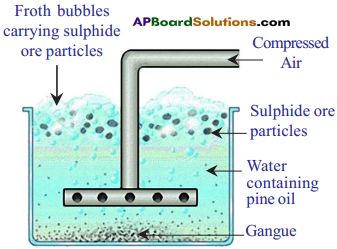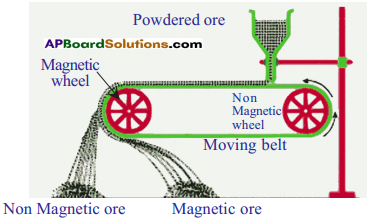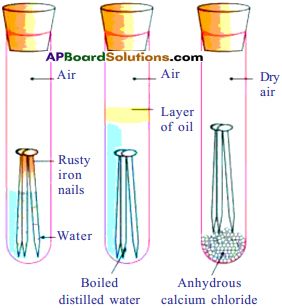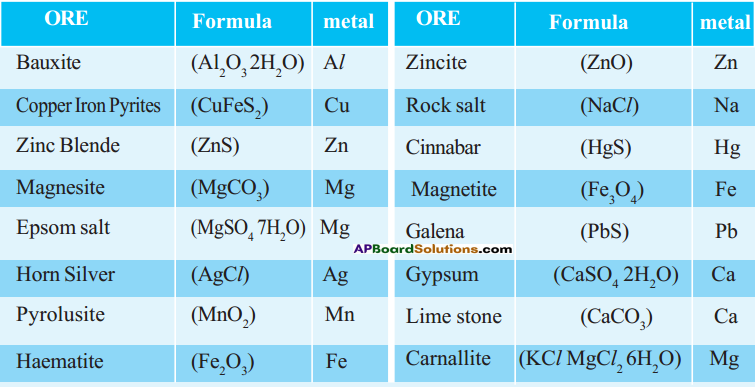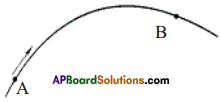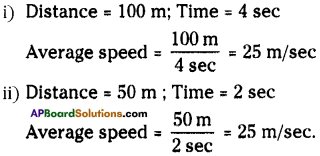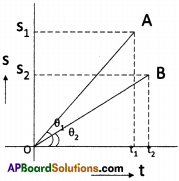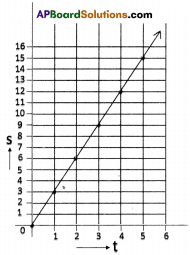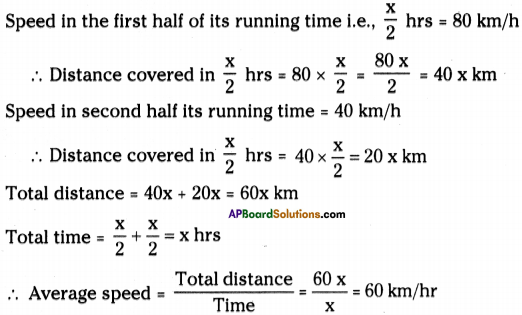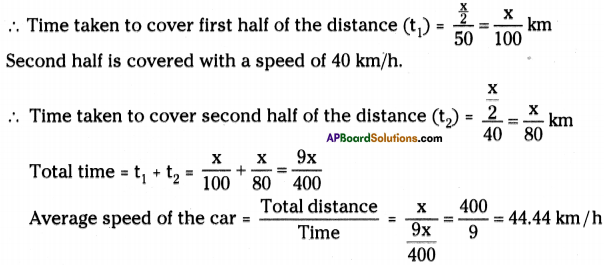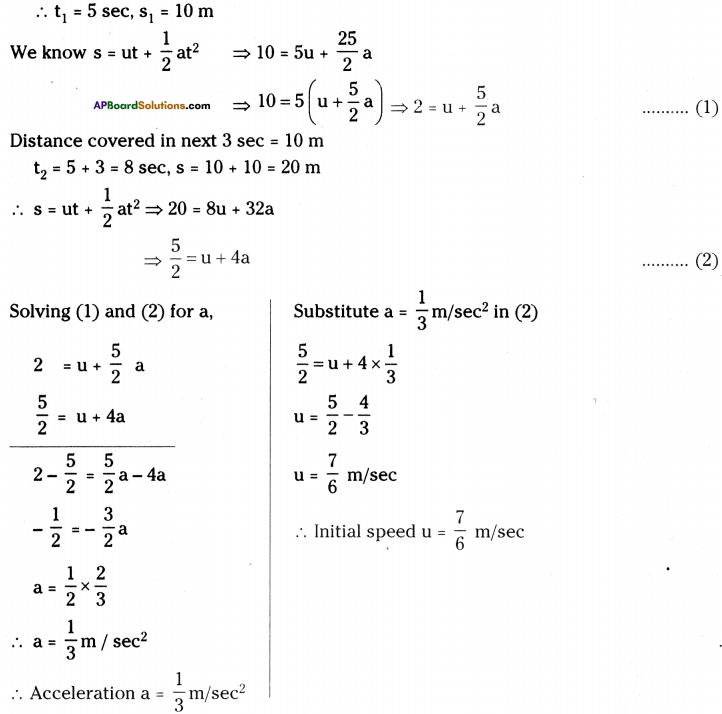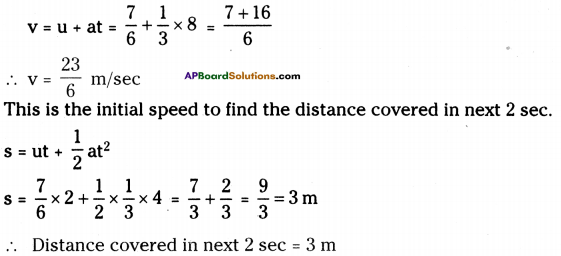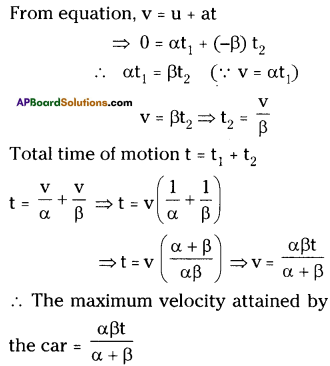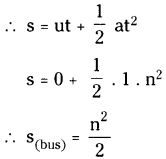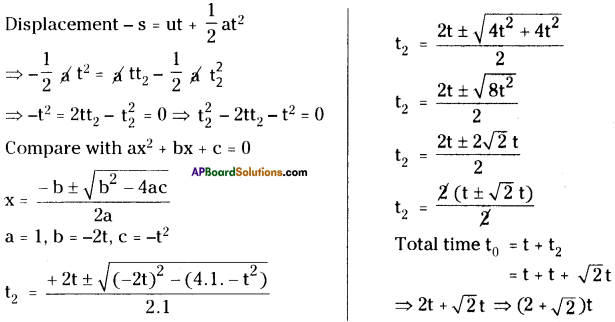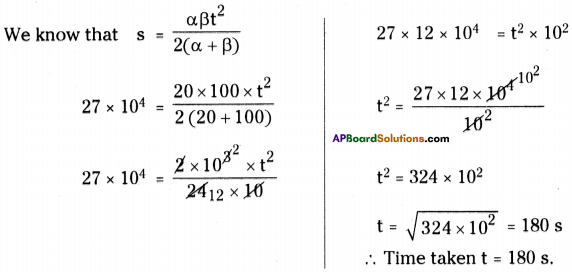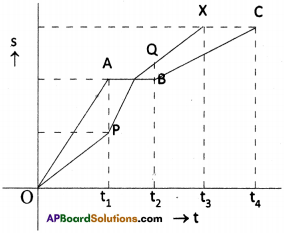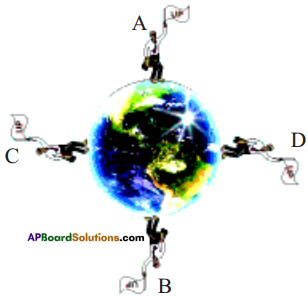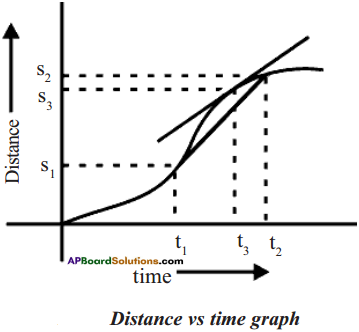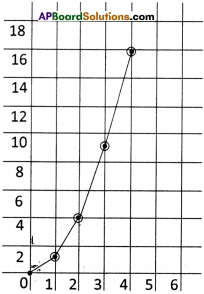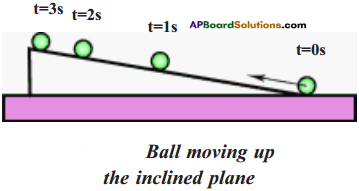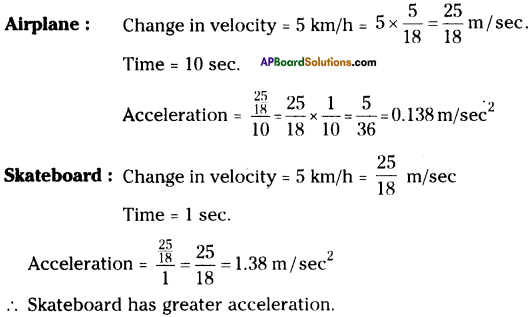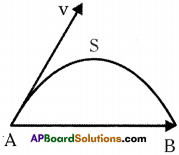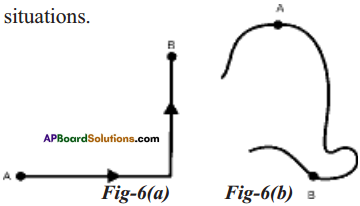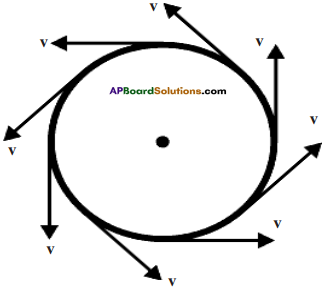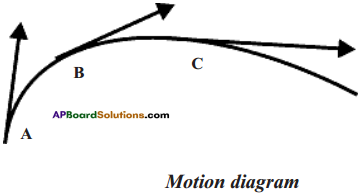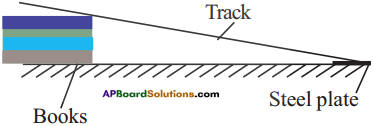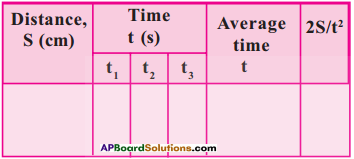AP State Board Syllabus AP SSC 10th Class Hindi Textbook Solutions Chapter 3 हम भारतवासी Textbook Questions and Answers.
AP State Syllabus SSC 10th Class Hindi Solutions Chapter 3 हम भारतवासी
10th Class Hindi Chapter 3 हम भारतवासी Textbook Questions and Answers
InText Questions (Textbook Page No. 13)
प्रश्न 1.
नदियाँ किसमें विलीन होती हैं?
उत्तर:
नदियाँ समुद्र में विलीन होती हैं।
प्रश्न 2.
इसमें किस – किसको एक बताया गया है?
उत्तर:
इसमें मानव जाति, मानव धर्म तथा सारी दुनिया को एक बताया गया है।

प्रश्न 3.
‘मानव जाति एक है।’ इस पर अपने विचार बताइए।
उत्तर:
मानव जाति एक है। जिस प्रकार अनेक स्थानों से बहनेवाली नदियाँ अंत में समुद्र में मिलती हैं। उसी प्रकार अलग – अलग धर्म में जन्म लिये मनुष्य भी अंत में परमात्मा के पास पहुँचते हैं। इसलिए हम कह । सकते हैं कि मानव जाति एक है उददश्य छात्रों में कविता, गीत आदि की रचना शैली का विकास करना और उनमें देशभक्ति के साथ-साथ विश्वबंधुत्व, विश्वशांति, अहिंसा, त्याग, समर्पण आदि सद्गुणों का विकास करना तथा भारत को और भी सशक्त कर अंतर्राष्ट्रीय स्तर पर अग्रसर करने की प्रेरणा देना इस पाठ का मुख्य उद्देश्य है। विधा विशेष प्रस्तुत कविता देशभक्ति की भावना पर आधारित है। यह गेय कविता है। इसमें तुकांत शब्द प्रथम प्रेरणार्थक क्रिया व सामान्य भविष्य में हैं। यह कविता बच्चों में सत्य, अहिंसा, त्याग और | समर्पण की भावना जागृत कर, उन्हें विश्वबंधुत्व की ओर कदम बढ़ाने की प्रेरणा देती है।
InText Questions (Textbook Page No. 14)
प्रश्न 1.
ऊँच – नीच का भेद मिटाने के लिए हम क्या – क्या कर सकते हैं?
उत्तर:
ऊँच – नीच का भेद मिटाना हमारा प्रथम आशय व कर्तव्य है। इसके लिए अपनी ओर से हम भी कुछ कर सकते हैं।
- सब लोगों से मिलजुलकर रहते एकता की भावना बढानी है।
- सबसे प्रेमपूर्वक व्यवहार करते नफ़रत की भावना को छोड देना है।
- समानता का बीज बोते लोगों के दिलों में विश्वास भरना है।
- जाति, धर्म, भाषा, प्रांत, जैसे भेद भावों को छोडते लोगों की सहायता करनी है।
- सबका आदर – सम्मान करना है।
- सबकी उन्नति में समान अवसर देना है।
प्रश्न 2.
हमें अपने जीवन में कैसा पथ अपनाना चाहिए?
उत्तर:
हमें जीवन में सदा सत्य और न्यायमार्ग पर चलना है। श्रद्धा और प्रेम का उत्तम भाव दिल में रखकर दीन – दुखियों की सेवा करनी है। खुद खुश रहते सब को सुखी रखने का न्याय पथ हमें अपनाना चाहिए। अहिंसा और धर्ममार्ग को अपनाना चाहिए। त्याग भावना को अपनाना चाहिए।

प्रश्न 3.
हम भटकने वालों को राह कैसे दिखा सकते हैं?
(या)
बेराहों को राह कैसे दिखा सकते हैं?
उत्तर:
भटकने वाले लोगों को जीवन की वास्तविकता समझाने का प्रयत्न करना है। सही मार्गदर्शन करते उनको खुशियाँ पाने का ज्ञान अवगत कराना है। न्याय और सत्य मार्ग पर आगे बढने ज्ञानपूर्ण सलाह देते भटकनेवालों को राह दिखा सकते हैं।
प्रश्न 4.
सत्य, अहिंसा, त्याग और समर्पण की बगिया महकाने के लिए हम क्या – क्या कर सकते हैं?
(या)
हम खुशियों की बगिया कैसे महकायेंगे?
उत्तर:
मानव सामाजिक प्राणी है। हमारे मानव जीवन में सत्य, अहिंसा, त्याग, समर्पण, प्रेम आदि महान गुणों का विशेष महत्व है। ऐसे उत्तम गुणों की बगिया महकाने हम पहले दुनिया के सारे क्लेश मिटाने का प्रयत्न करेंगे। विश्व बंधुत्व का मूलमंत्र खुद अपनाते लोगों को श्रद्धा और प्रेम का अद्भुत दृश्य दिखायेंगे। इस तरह सत्य, अहिंसा, त्याग और समर्पण की बगिया महका सकते हैं। धरती को स्वर्ग बना सकते हैं।
अर्थग्राह्यता-प्रतिक्रिया
अ) प्रश्नों के उत्तर दीजिए।
प्रश्न 1.
यह गीत आपको कैसा लगा ? अपनी पसंद और नापसंद का कारण बताइए।
उत्तर:
“हम भारतवासी” गीत मुझे बहुत पसंद आया। यह गीत सरल, सुबोध और प्रभावशाली है। देशभक्ति भावना जगाकर, विश्वबंधुत्व की ओर हमें अग्रसर होने की प्रेरणा देनेवाला है। भारतवासियों के सत्य, अहिंसा, त्याग, समर्पण आदि गुणों का समर्थन करते हुए दुनिया को पावन धाम बनाने की महत्वाकांक्षा रखती है। सारे विश्व के लोगों के विविध क्लेशों को मिटाकर एक धर्म कुटुंब बनने की प्रेरणा देनेवाला है। भारतीय संस्कृति की गरिमा बढाने वाला है। खासकर भारतीयों के धर्म, जाति, संप्रदाय रूपी विषमताओं को भगाकर सब में अपनापन जगानेवाला है।

प्रश्न 2.
दुनिया को ‘पावन धाम’ बनाने के लिए हम क्या – क्या कर सकते हैं?
उत्तर:
दुनिया को पावन धाम बनाने के लिए
- ऊँच – नीच का भेद मिटायेंगे।
- निराशा की भावना भगाकर विश्वास जगायेंगे।
- उलझे लोगों को वास्तविकता बतायेंगे। बेराहों को राह दिखायेंगे।
- सत्य, अहिंसा, त्याग, समर्पण, विश्व बंधुत्व की भावना जगायेंगे।
आ) दिया गया पद्यांश पढ़िए और इसके मुख्य शब्द पहचान कर लिखिए।
मन में श्रद्धा और प्रेम का अद्भुत दृश्य दिखायेंगे।
सत्य, अहिंसा, त्याग, समर्पण की बगिया महकायेंगे।
जग के सारे क्लेश मिटाकर, धरती को स्वर्ग बनायेंगे।
विश्वबंधुत्व का मूल मंत्र हम, दुनिया में सरसायेंगे।
जैसे : श्रद्धा, …………………,
…………………………..,
…………………………..,
उत्तर:
प्रेम, सत्य, अहिंसा, त्याग, समर्पण, क्लेश, विश्वबंधुत्व के सहारे धरती को स्वर्ग बनाना।
इ) निम्नलिखित भाव से संबंधित कविता की पंक्तियाँ पहचानकर लिखिए।
प्रश्न 1.
संसार में व्याप्त सारे विवादों को मिटाकर, हम धरती को स्वर्ग बनायेंगे।
उत्तर:
जग के सारे क्लेश मिटाकर, धरती को स्वर्ग बनायेंगे।

प्रश्न 2.
जीवन पथ से भटके लोगों को रास्ता दिखाएँगे।
उत्तर:
भटक रहे जो जीवन पथ से, उनको राह दिखायेंगे।
प्रश्न 3.
हम भेदभाव दूर करेंगे। हम सब मिलजुलकर रहेंगे।
उत्तर:
ऊँच – नीच का भेद मिटाकर, दिल में प्यार बसायेंगे।
ई) नीचे दिया गया पद्यांश पढ़कर सही उत्तर पहचानिए।
आज़ादी अधिकार सभी का जहाँ बोलते सेनानी,
विश्व शांति के गीत सुनाती जहाँ चुनरिया ये धानी,
मेघ साँवले बरसाते हैं, जहाँ अहिंसा का पानी,
अपनी माँगें पोंछ डालती, हँसते – हँसते कल्याणी,
ऐसी भारत माँ के बेटे मान गँवाना क्या जाने,
मेरे देश के लाल हठीले शीश झुकाना क्या जानें।
1. धानी रंग की चुनरी कौन – सा गीत सुना रही है?
अ) अधिकार का
आ) आज़ादी का
इ) विश्वशांति का
ई) अहिंसा का
उत्तर:
इ) विश्वशांति का
2. भारत के लाल कैसे हैं?
अ) सजीले
आ) साँवले
इ) हठीले
ई) निराले
उत्तर:
इ) हठीले

3. सैनिक किसे सभी का अधिकार मानते हैं? ‘
अ) आज़ादी को
आ) शांति को
इ) अहिंसा को
ई) मान को
उत्तर:
अ) आज़ादी को
4. “मान” शब्द का विलोमार्थक है
अ) निरमान
आ) दुरमान
इ) अपमान
ई) स्वमान
उत्तर:
इ) अपमान
5. भारत माँ के बेटे क्या गाँवाना नहीं चाहते हैं?
अ) आज़ादी
आ) मान
इ) शीश
ई) अधिकार
उत्तर:
आ) मान
अभिव्यक्ति – सृजनात्मकता
अ) इन प्रश्नों के उत्तर तीन – चार पंक्तियों में लिखिए।
प्रश्न 1.
उलझनों से बचे रहने के लिए हमें कैसी सावधानियाँ लेनी चाहिए?
उत्तर:
उलझनों से बचे रहने के लिए
- धार्मिक भेद – भाव न रखना चाहिए।
- उत्तम मानवीय मूल्यों को बनाये रखना है।
- पारस्परिक सहयोग की भावना होना है।
- हमेशा सतर्क, जागरूक रहना है।
- बौद्धिक विकास करना चाहिए।
प्रश्न 2.
निराशावादी और आशावादी के स्वभाव में क्या अंतर होता है?
उत्तर:
निराशावादी में निराशा की भावना होती है। वह निष्क्रिय होता है। जीवन दुखद होता है। उलझा रहता है। आशावादी में आशा की भावना होती है। वह सक्रिय होता है। जागरूक रहता है। सत्य, अहिंसा, त्याग समर्पण होती है।

आ) गीत में ‘धरती को स्वर्ग’ बनाने की बात कही गयी है। हम इसमें क्या सहयोग दे सकते हैं?
(या)
पूरे विश्व को स्वर्ग का धाम कैसे बना सकते हैं?
उत्तर:
कविता का नाम : हम भारतवासी
कवि का नाम : आर.पी.निशंक
हिंदी के विख्यात कवि हैं आर.पी. निशंक| इस कविता के ज़रिये कवि छात्रों में देश भक्ति, विश्वबंधुत्व, विश्वशांति, सत्य, अहिंसा, त्याग, समर्पण आदि महान सद्गुणों का विकास करना चाहते हैं।
“हम भारतवासी” कविता में धरती को स्वर्ग बनाने की बात पर प्रकाश डाला गया है। सच्चे भारतीय होने के कारण हम भी अपना पूरा सहयोग दे सकते हैं।
- हम मानवों में भरे जाति – धर्म, वर्ग – वर्ण, ऊँच – नीच, अमीर – गरीब जैसे भेदभावों को दूर कर
- सकते हैं। इससे एकता की भावना बढकर सब लोग प्रेम से रह सकते हैं।
- सत्य, अहिंसा, सेवा, त्याग, प्रेम आदि का महत्व समझाकर विश्व बंधुत्व की भावना जगा सकते हैं।
- स्वार्थ भाव से भरे लोगों को स्वार्थरहित, पक्षपात रहित और सहनशील बनाकर देश प्रेमी बना सकते हैं।
- दुःख में धीरज धर लेने का आत्मविश्वास उनमें भरकर निराशावाद दूर भगाकर आशावादी बना सकते हैं।
- जीवन पथ से भटके लोगों को मार्गदर्शन करके उन्हें सक्रिय मार्ग पर लगा सकते हैं।
- हर्ष – विषाद आपस में बाँटकर अपनापन बढा सकते हैं। – एक दूसरे के प्रति आदर का भाव रखते, प्रेमालू बना सकते हैं।
एक बात में कहे तो वसुदैक कुटुंबकम बना सकते हैं। ऐसा करके हम भी धरती को स्वर्ग बनाने में अपना पूरा सहयोग दे सकते हैं।
विशेषता : इस कविता में देश भक्ति और नैतिक मूल्य बताये गये हैं।

इ) विश्वशांति की राह में समर्पित किस महान व्यक्ति का साक्षात्कार आप लेना चाहेंगे? साक्षात्कार में उनसे पूछे जाने वाले प्रश्नों की एक सूची तैयार कीजिए।
उत्तर:
विख्यात नेता से साक्षात्कार लेने के लिए मैं निम्न लिखित इस प्रश्नावली को तैयार करूँगा।
वे प्रश्न इस प्रकार हैं –
- महोदय। विश्वशांति के लिए आप अविरल प्रयत्न कर रहे हैं। क्या आप यह बता सकते हैं कि विश्वशाँति माने क्या है? उसकी क्या आवश्यकता है?
- आपको इस महत्वपूर्ण कार्य में पदार्पण करने का विचार क्यों और कैसे आया? इसके क्या कारण हो सकते हैं?
- आपके इस पवित्र यज्ञ में किन-किन सज्जनों ने आपका सहयोग दिया ?
- अपनी संकल्प सिद्धि के इस पावन काम में आपने कौनसे त्याग किये ? वे कहाँ तक फलदायी हुये हैं?
- आपको इस काम में कहाँ तक सफलता मिली है?
- आपके इस पुण्य कार्य में कौन-सी अडचनों का सामना करना पड़ा?
- आगे आनेवाली पीढी को आपका संदेश क्या है?
- सुना है कि इस विश्वशांति के पावन यज्ञ में सफल हुए व्यक्ति को नोबेल पुरस्कार से सम्मानित करते हैं। आपको यह पुरस्कार मिले तो आप कैसा अनुभव करते ?
ई) सत्य, अहिंसा, त्याग आदि भावनाओं का हमारे जीवन में क्या महत्व है?
उत्तर:
हमारे जीवन में सच्चाई से बढ़कर कोई तपस्या नहीं होती। सत्य से जीवन सुखद बनता है। इसके आचरण से सच्चरित्र और महान बनता है। समाज में वंदनीय और पूजनीय बनता है।
किसी को क्षमा करना और हर प्राणी पर दया करना मनुष्य का कर्तव्य होना चाहिए। अहिंसा से दया और भाईचारे का जन्म होता है।
त्याग भावना से प्रेम और भाईचारा भाव बढ़ता है। चारों ओर संतोष होता है। भोग से त्याग श्रेयस्कर होता है।
भाषा की बात
अ) कोष्ठक में दी गयी सूचना पढ़िए और उसके अनुसार कीजिए।
प्रश्न 1.
दुनिया, अमृत, पावन (वाक्य प्रयोग कीजिए। पर्याय शब्द लिखिए।)
(जैसे – यह दुनिया बड़ी निराली है। विश्व, जग, संसार)
उत्तर:
वाक्य प्रयोग
अमृत : देव जाति के लोगों ने अमृत का पान किया है।
पावन : बापूजी का यह पावन उदेदश्य आदर्शनीय है।
पर्याय शब्द
अमृत – सुधा, पीयूष
पावन – पवित्र, पुनीत

प्रश्न 2.
निराशा, त्याग, प्यार (विलोम शब्द लिखिए। उससे वाक्य प्रयोग कीजिए।)
(जैसे – निराशा × आशा, हमें जीवन में आशा बढानी चाहिए।)
उत्तर:
विलोम शब्द
त्याग × स्वार्थ
प्यार × घृणा
वाक्य प्रयोग
त्याग : त्याग भावना उत्तम है, स्वार्थ भावना अधम है।
प्यार : प्यार से रहना चाहिए। ईर्ष्या या घृणा पाप है।
प्रश्न 3.
खुशी, बगीचा, भावना (वचन बदलिए। वाक्य प्रयोग कीजिए।)
(जैसे – खुशी – खुशियाँ, बच्चों को खेलों से बहुत सारी खुशियाँ मिलती हैं।)
वचन वाक्य प्रयोग
उत्तर:
खुशी – खुशियाँ : वे सब मिलकर खुशियाँ मना रहे हैं।
बगीचा – बगीचे : बैगलूर में कई सुंदर बगीचे हैं।
भावना – भावनाएँ : हमें अपने दिलों में सदा अच्छी भावनाएँ रखनी हैं।

आ) सूचना पढ़िए और उसके अनुसार कीजिए।
प्रश्न 1.
पवन, पावन, निराशा (संधि विच्छेद कीजिए।)
उत्तर:
संधि विच्छेद
पवन = पो + अन
पावन = पौ + अन
निराशा = निः + आशा
प्रश्न 2.
भारतवासी, जीवनज्योत (समास पहचानिए।)
उत्तर:
भारतवासी : → तत्पुरुष समास (भारत के वासी)
जीवनज्योत → कर्मधारय समास(जीवन रूपी ज्योत)
इ) इन्हें समझिए और वाक्य प्रयोग कीजिए।
1. खुशी
2. खुशियाँ
3. खुशियों में
उत्तर:
- वह खुशी मनाती है। यह खुशी संज्ञा शब्द है।
- त्यौहार के दिन लोग खुशियाँ मनाते हैं। खुशी का बहुवचन खुशियाँ हैं।
- अच्छे लोग सदा खुशियों की दुनिया में रहते हैं। संबंध बोध कारक हैं।

ई)1. नीचे दिया गया उदाहरण समझिए। उसके अनुसार दिये गये वाक्य बदलिए।
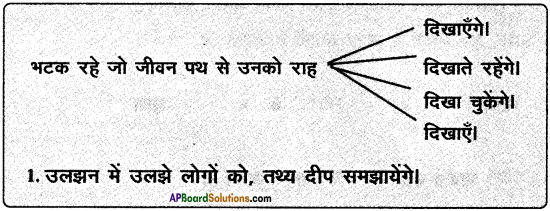
उत्तर:

2. कविता में आये मुहावरे पहचानिए और अर्थ लिखिकर वाक्य प्रयोग कीजिए।
उत्तर:
1. पावन धाम बनाना = पवित्र स्थल बनाना
हमें दुनिया को पावन धाम बनाना चाहिए।
2. अमृत रस सरसाना = प्रेम भावना जगाना
भारतवासी सभी लोगों के दिलों में अमृत रस सरसायेंगे।
3. विश्वास जगाना = यकीन दिलाना
निराशावादी लोगों में विश्वास जगाने की आवश्यकता है।
4. राह दिखाना = सही रास्ता दिखाना
अध्यापक छात्रों को राह दिखाते हैं।
5. दिल में प्यार बसाना = एकता बनाना
नेता लोगों के दिल में प्यार बसाते हैं।
6. तथ्य दीप समझाना = यथार्थ / वास्तव बताना
तथ्य दीप समझाने से अहित कार्य नहीं होते।
7. कुहासा तोडना = स्पष्ट करना
मन में व्याप्त कुहासा तोडने से सुखी रह सकते हैं ।
परियोजना कार्य
शांति के पथ पर समर्पित किसी महान व्यक्ति के बारे में जानकारी इकट्ठा कर कक्षा में प्रस्तुत कीजिए।
उत्तर:
जिम्मी कार्टर जिम्मी कार्टर का पूरा नाम जेम्स अर्ल कार्टर जूनियर है। (जन्म अक्तूबर 1, 1924) एक अमेरिकी राजनेता हैं जो 1976 से 1980 तक संयुक्त राज्य अमेरिका के 39 वें राष्ट्रपति रहे। राष्ट्रपति बनने से पहले वे संयुक्त राज्य अमेरिका की नौसेना में कार्यरत रहें, जॉर्जिया में सेनेटर रहे, और जॉर्जिया के गवर्नर भी रहे। राष्ट्रपति कार्यकाल के बाद वे मानव अधिकार संस्थाओं एवं परोपकारी संस्थाओं के साथ जुड़े रहे। उन्हें 2002 में नोबेल शान्ति पुरस्कार से सम्मानित किया गया।
प्रारंभिक जीवन :
जिम्मी कार्टर का जन्म जॉर्जिया के प्लेन्स नामक शहर में वाइस क्लीनिक अस्पताल में हुआ था जहाँ उनकी माँ लिलियन कार्टर नर्स थीं। उनके पिता अर्ल कार्टर का खेत था जिसमें वे कपास एवं मूंगफली उगाया करते थे। 1926 में जिम्मी की छोटी बहन ग्लोरिया, 1929 में रूथ, और 1937 में छोटे भाई बिली का जन्म हुआ। 1941 में जिम्मी ने प्लेन्स हाई स्कूल से दसवीं कक्षा पास की । 1941 में जिम्मी ने अमेरिकन्स शहर में स्थित जॉर्जिया साउथवेस्टर्न कॉलेज में पढ़ाई शुरू की। 1942 में उन्होंने यह कॉलेज छोड़ जॉर्जिया इंस्टिट्यूट ऑफ़ टॅकनॉलोजी में दाखिला लिया। 1943 में उन्हें एनापोलिस , मैरीलैंड स्थित यू. एस नेवल अकैडमी में दाखिला मिल गया और वे 1946 में वहाँ से उत्तीर्ण हुए। उत्तीर्ण होने के पश्चात वे संयुक्त राज्य अमेरिका की नौसेना की पहली परीक्षनात्मक पनडुब्बी में कार्यरत हुए।
जुलाई 7, 1947 को कार्टर ने बहन रूथ की सहेली एलानोर रोज़ालिन स्मिथ से विवाह कर लिया। 1947 में कार्टर के पुत्र जॉन विलियम का जन्म हुआ, 1950 में जेम्स अर्ल II का, 1952 में डॉनल जेफ़्फ़ी … का और 1967 में पुत्री एमी लिन का जन्म हुआ। 1953 में जिम्मी के पिता अर्ल की मृत्यु होने पर जिम्मी अपनी पत्नी के साथ जॉर्जिया वापिस लौट गए, पिता के खेती के कारोबार को संभालने के लिए।
कैरियर : 1962 में कार्टर को जॉर्जिया सेनेट में चुना गया। 1966 में उन्होंने जॉर्जिया को गवर्नर पद के लिए चुनाव लड़ा परन्तु जीत नहीं पाए। 1971 में वे फिर जार्जिया के गवर्नर पद के चुनाव में खड़े हुए और जीते। जिम्मी कार्टर, मेनाम बेगिन और अनवर अल-सदात 1978 में कैम्प डेविड में। 1977 में वे संयुक्त राज्य अमेरिका के 39 वे राष्ट्रपति बने। राष्ट्रपति के तौर पर इनके कार्यकाल में निम्न मुख्य घटनाएँ हुई।
1978 में कैम्प डेविड में कार्टर ने मिस्र के राष्ट्रपति अनवर अल – सदात और इजराइल के प्रधानमन्त्री मेनाखेम बेगिन के बीच समझौता करवाया जिसके नतीजे में 1979 में इज़राइल और मित्र के बीच में शान्ति कायम हुई।
1 जनवरी 1979 को संयुक्त राज्य अमेरिका ने चीनी जनवादी गणराज्य को राजनयिक मान्यता दी और दोनों के बीच में राजनयिक संबंध कायम हुए। इसी के साथ चीनी गणराज्य की राजनयिक मान्यता रद्द कर दी गयी और राजनयिक संबंध औपचारिक रूप से तोड़ दिए गए यद्यपि दोनों देशों ने अनौपचारिक रूप से राजनयिक संबंध जारी रखे।
1979 में हुई ईरान की इस्लामी क्रांति के दौरान नवंबर में तेहान में स्थित अमेरिकी दूतावास पर उग्रवादी छात्रों ने कब्जा कर लिया और 50 से अधिक अमेरिकी बंधी बना लिए गए। जब ईरान और संयुक्त राज्य अमेरिका कोई कूटनीतिक समाधान नहीं कर सके तो 1980 में सैन्य बल पर बंदियों को . छुड़ाने की नाकाम कोशिश की गई जिसमें अमेरिकी सैनिकों की जान गई। अंत में बंधी 1981 में 444 दिनों के पश्चात छोड़े गए।
सोवियत संघ के अफ़गानिस्तान पर हमला करने पर कार्टर ने आदेश दिया कि संयुक्त राज्य अमेरिका के खिलाड़ी मॉस्को में हो रहे 1980 ग्रीष्मकालीन ओलिम्पिक खेलों का बहिष्कार करेंगे। वे 1980 में राष्ट्रपति चुनाव में पुनः खड़े हुए परन्तु हार गए।

राष्ट्रपति कार्यकाल के पश्चात :
राष्ट्रपति कार्यकाल समाप्त होने के बाद कार्टर ने मानव अधिकार संबंधित अनेक संस्थाओं, एवं अनेक परोपकारी संस्थाओं के साथ काम किया है। 1982 में कार्टर ने अटलांटा, जॉर्जिया स्थित एमरी विश्वविद्यालय में कार्टर प्रेसिडेंशियल सेंटर की स्थापना की जो लोकतंत्र और मानव अधिकार संबंधित कार्य करता है।
कार्टर ने राष्ट्रपति कार्यकाल के पश्चात अनेक पुस्तकें भी लिखी हैं।
कार्टर को 2002 में नोबेल शान्ति पुरस्कार से सम्मानित किया गया।
हम भारतवासी Sunnary in English
We are Indians. We transform India into a holy heaven. We show the marvellous images of care and love in our hearts.
We fill our hearts with love discarding the feelings of high and low, rich and poor etc. We sprinkle the sap of ambrosia removing the mist patches like jealousy and hatred. We dispel the despair, fill hope and dispense confidence. We are Indians. We transform the world into a holy heaven.
We make the people who are extrapped in problems and difficulties realise the fact. We show the proper way to the people are led astray from the path of life. We enkindle the lights of life with the lamps of joy.
We are Indians. We transform India into a holy heaven.
We show the marvellous images of care and love in our hearts. We grow the groves of truth, non-violence, sacrifice, dedication and devotion. We remove all the adversities from the world and make it a heaven. We chant the spell of fraternity, universal rapport and make others chant.
We are Indians. We transform India into a holy heaven. We show the marvellous images of care and love in our hearts.
हम भारतवासी Summary in Telugu
మేము భారతీయులం. మేము ప్రపంచాన్ని పావనధామంగా తయారుచేస్తాం. మనస్సుల్లో శ్రద్ధ మరియు ప్రేమల అద్భుత దృశ్యాలను చూపుతాము.
ఉన్నవారు – లేనివారు (ఉన్నతమైన – నిమ్నమైన) అనే భేదభావాలు లేక హృదయాలలో ప్రేమను నింపుకుంటాము. ఈర్ష్యా – ద్వేషం అనే మంచు తెరలను తొలగించి అమృతరసాన్ని చిలికిస్తాం. నిరాశను దూరం చేసి ఆశను నింపి విశ్వాసాన్ని రేకెత్తిస్తాం, మేల్కొలుపుతాం. మేము భారతీయులం. ప్రపంచాన్ని పావనధామంగా తీర్చిదిద్దుతాం.
సమస్యలలో చిక్కుకుని ఊగిసలాడుతున్న ప్రజలకు యదార్థాన్ని తెలియజేస్తాం. జీవన పథం నుండి దారి మళ్ళి తిరుగుతున్నవారికి దారి చూపిస్తాం. సంతోష దీపాలతో జీవన జ్యోతులను వెలిగిస్తాం.
మేము భారతీయులం. ప్రపంచాన్ని పావనధామంగా తీర్చిదిద్దుతాం.
మనస్సుల్లో శ్రద్ధ, ప్రేమల అద్భుత దృశ్యాలను చూపుతాం. సత్యం, అహింస, త్యాగం, సమర్పణ మొదలైన తోటలను పెంచుతాం. ప్రపంచంలోని అన్ని కష్టాలను తొలగించి భూమిని స్వర్గంలా తీర్చిదిద్దుతాం. విశ్వబంధుత్వ మూలమంత్రాన్ని ప్రపంచంలో జపింపజేస్తాం, జపిస్తాం.
మేము భారతీయులం. ప్రపంచాన్ని పావనధామంగా తయారుచేస్తాం. మనస్సుల్లో శ్రద్ధ మరియు ప్రేమల అద్భుత దృశ్యాలను చూపుతాం.
अभिव्यक्ति-सृजनात्मकता
2 Marks Questions and Answers
निम्नलिखित प्रश्नों के उत्तर दो या तीन वाक्यों में लिखिए।
प्रश्न 1.
दुनिया को ‘पावन धाम’ बनाने के लिए हम क्या – क्या कर सकते हैं?
उत्तर:
मैं सच्चे भारतीय होने के कारण सारी दुनिया को पावन धाम बनाना चाहता हूँ। यह मेरा प्रमुख कर्तव्य है। इसके लिए मैं पहले अपने दिल में निर्मल और उत्तम भावनाएँ भर लूंगा। सबके दिलों में एकता और सौभ्रातृत्व भावना जगाने का प्रयत्न करूँगा। प्रेम भाव का महत्व समझाते लोगों को भेद – भावों से दूर रहने का आग्रह करूँगा। सारी मानव जाति एक है – यह नारा देते भक्ति और धर्मयुक्त जीवन बिताने बाध्य करूँगा। खुद सत्य, अहिंसा, त्याग, आत्म समर्पण जैसे उत्कृष्ट गुणों का प्रचार करते लोगों को रास्ता दिखाऊँगा।
प्रश्न 2.
आर.पी. निशंकजी के बारे में आप क्या जानते हैं? लिखिए।
उत्तर:
- आर.पी.निशंक आधुनिक हिंदी साहित्यकारों में विशिष्ट स्थान रखते हैं।
- इनकी रचनाओं का मुख्य प्रतिपाद्य देश भक्ति है। समर्पण, नंवकुर, मुझे विधाता बनना है, तुम भी मेरे साथ चलो, जीवन पथ में, कोई मुश्किल नहीं आदि उनकी चर्चित काव्य रचनाएँ हैं।
अभिव्यक्ति-सृजनात्मकता
4 Marks Questions and Answers
निम्नलिखित प्रश्नों के उत्तर छह पंक्तियों में लिखिए।
प्रश्न 1.
निराशा को दूर करने के क्या – क्या उपाय हैं?
उत्तर:
निराशा को दूर करने के लिए ये उपाय हैं –
- मन में श्रद्धा और प्रेम का अद्भुत दृश्य दिखाने से निराशा दूर हो जाती है ।
- दिल में प्यार बसाने से निराशा दूर कर सकेंगे |
- हम दूसरों में विश्वास जगायें तो निराशा दूर हो जायेगा ।
- ऊँच – नीच के भेद – भावों को मिटाने से भी निराशा दूर हो जायेगी।

प्रश्न 2.
विश्व बंधुत्व का अर्थ क्या है?
उत्तर:
- एक ही परिवार के सभी लोग जिस प्रकार बंधुत्व भाव से रहते हैं, उसी प्रकार विश्व भर के लोगों से बंधु भावना से रहना ही विश्व बंधुत्व है । केवल भारतीयों और भारत देश में ही विश्व बंधुत्व की भावना प्राचीन काल से आज तक चल रही है।
- हम हर हमेशा कहते भी हैं कि सर्वेजना सुखिनो भवंतु |
- जिस प्रकार हम प्रांतीय एवं जातीय भावना से रहते हैं उसी प्रकार विश्व बंधुत्व की भावना से भी रहना है।
- सारे विश्व की मंगल भावना ही विश्व बंधुत्व भावना है ।
प्रश्न 3.
ऊँच – नीच का भेद भाव मिटाने के लिए हमें क्या करना है?
उत्तर:
- ऊँच – नीच का भेद मिटाने के लिए हमें सबके प्रति श्रद्धा और प्रेम को दिखाना है ।
- सबके दिलों में प्यार बसाना है ।
- नफ़रत के कुहासे को तोडना है ।
- सामाजिक, आर्थिक , राजनीतिक एकता से हम ऊँच – नीच के भेद -भावों को मिटा सकते हैं ।
- दूसरों के निराशा को दूर करने से भी कुछ हद तक भेद भाव मिटा सकेंगे।
- हमारे पास जो कुछ आवश्यकता से अधिक है उसे ज़रूरतमंदों को दे देने से भी भेदभावों को हटा सकेंगे।
प्रश्न 4.
किसी काम को आत्मविश्वास के साथ क्यों करना है?
उत्तर:
- हम जो भी करें आत्मविश्वास के साथ करें तो वह काम ज़रूर पूरा होगा | सफल होगा |
- आत्मविश्वास में अद्भुत शक्ति निहित है ।
- आत्मविश्वास से हम जितने भी कष्ट से कष्ट एवं मुश्किल काम को भी बहुत आसानी के साथ कर सकते हैं।
- आत्मविश्वास हम में जीने की शक्ति को बढ़ाता है ।
प्रश्न 5.
जीवन पथ से भटकने वालों को हम कैसे राह दिखा सकते हैं?
उत्तर:
- मन में श्रद्धा और प्रेम का अद्भुत दृश्य दिखाकर हम जीवन पथ में भटकने वालों को राह दिखा सकते हैं।
- उलझन में उलझे लोगों को तथ्य दीप समझाकर राह दिखा सकेंगे |
- हम खुशियों के दीप जलाकर जीवन ज्योत जलाकर जीवन पथ से भटकने वालों को राह दिखा सकते हैं।
प्रश्न 6.
विश्व शांति से आपका अभिप्राय क्या है?
उत्तर:
- विश्व बंधुत्व भावना ही विश्वशांति है ।
- सारी दुनिया भर में शांति स्थापना ही विश्व शांति है ।
- देश भर के लोग मन में श्रद्धा तथा प्रेम के अद्भुत दृश्यों के साथ रहेंगे तो वही विश्व शांति है ।
- सत्य, अहिंसा, त्याग, समर्पण आदि भावों से हम रहेंगे तो विश्वशांति अवश्य होगी।
- युद्ध, दुख, लालच और सभी पीडाओं को मिटाने का एक मात्र साधन है – विश्वशांति ।
- जहाँ शांति है वहाँ सुख है, जहाँ सुख है वही स्वर्ग है । यह सब विश्व शांति के द्वारा ही साध्य है।
अभिव्यक्ति-सृजनात्मकता
8 Marks Questions and Answers
निम्नलिखित प्रश्नों के उत्तर आठ या दस पंक्तियों में लिखिए।
प्रश्न 1.
भारत की संस्कृति सारे विश्व को लुभाती है। इस कथन पर व्याख्या कीजिए|
उत्तर:
शीर्षक का नाम : “हम भारतवासी” है।
कवि का नाम : “आर.पी.निशंक’ है।
- भारतीय संस्कृति की मुख्य विशेषताएँ ये हैं कि
- भारतीय संस्कृति में ऊँच – नीच का भेद मिटाकर दिल में प्यार बसाने की शक्ति है।
- सत्य, अहिंसा, त्याग, समर्पण जैसे सद्गुणों का विकास करने की शक्ति है।
- जग के सारे क्लेशों को मिटाकर धरती को स्वर्ग बनाने की शक्ति है।
- विश्व के सारे लोगों में प्रेम और शांति की स्थापना कर सकती है।
- विश्व बंधुत्व रूपी मूलमंत्र दुनिया में सरसाने की शक्ति इस संस्कृति में है।
- इस प्रकार हम कह सकते हैं कि भारत की संस्कृति सारे विश्व को लुभाती है।

प्रश्न 2.
“भारतीय, विश्वशांति और विश्वबंधुत्व की पवित्र भावनाओं से दुनिया को पवित्र धाम बनायेंगे” हम भारतवासी कविता के आधार पर स्पष्ट कीजिए।
उत्तर:
शीर्षक का नाम : “हम भारतवासी” है।
कवि का नाम : “आर.पी.निशंक” है।
- हम भारतवासी दुनिया को पावन धाम बनायेंगे। मन में श्रद्धा और प्रेम का अद्भुत दृश्य दिखायेंगे।
- हम सब में ऊँच-नीच का भेद मिटाकर दिल में प्यार बसायेंगे।
- हम नफ़रत को दूर कर अमृत बरसायेंगे।
- हम सत्य, अहिंसा, त्याग और समर्पण की बगिया को महाकायेंगे।
- जग के सारे क्लेशों को मिटाकर धरती को स्वर्ग बनायेंगे।
- विश्व बंधुत्व रूपी मूल मंत्र हम दुनिया में सरसायेंगे।
- इस प्रकार भारतीय विश्वशांति, विश्व बंधुत्व की भावनाओं से दुनिया को पवित्र धाम बनायेंगे।
प्रश्न 3.
विश्वशांति और विश्वबंधुत्व की भावना भारतवासी कैसे फैलायेंगे?
उत्तर:
- हम भारतवासी कविता के कवि श्री आर.पी. निशंक है।
- ये महान हिंदी साहित्यकार है, इनकी कविताओं का मुख्य विषय देश भक्ति है।
- प्रस्तुत कविता ‘मातृभूमि के लिए ‘संग्रह’ से लिया गया है।
- इस कविता में भारतीयों के लक्षणों के बारे में बताया गया है।
- भारतवासी दुनिया को पावन धाम बनायेंगे।
- श्रद्धा और प्रेम से दुनिया का मार्ग निर्देशन करेंगे।
- ऊँच – नीच का भेद मिटायेंगे, सब से प्यार करेंगे।
- नफ़रत मिटाकर अमृत रस सरसायेंगे, निराशा दूर भगाकर विश्वास जगायेंगे।
- उलझन में फंसे लोगों को राह दिखायेंगे, जीवन पथ से भटके लोगों को राह दिखायेंगे।
- सत्य, अहिंसा, त्याग, समर्पण आदि भावों से भरा समाज बनायेंगे।
- इस तरह विश्वशांति और विश्वबंधुत्व की भावना फैलायेंगे।
प्रश्न 4.
हम भारतवासी कविता का सारांश अपने शब्दों में लिखिए।
आर.पी. निशंक कृत “हम भारतवासी” पाठ का सारांश अपने शब्दों में लिखिए।
उत्तर:
हम भारतवासी
कविता का नाम : हम भारतवासी
कवि का नाम : श्री आर. पी. निशंक
रचनाएँ : समर्पण, नवंकुर,जीवन पथ में, मुझे विधाता बनना हैं, तुम भी मेरे साथ चलो, कोई मुश्किल नहीं आदि।
पुरस्कार : पद्म श्री
सारांश :
आधुनिक हिंदी साहित्यकारों में आर.पी. निशंक जी विशिष्ट स्थान रखते हैं। अपनी इस कविता में आप छात्रों में देश भक्ति भावना के साथ विश्व बंधुत्व विश्वशांति, अहिंसा, त्याग, समर्पण आदि उत्तम गुणों का विकास करना चाहते हैं।
कवि कहते हैं कि हम भारतवासी दुनिया को पावन धाम बनायेंगे। हम अपने मन में श्रद्धा और प्रेम का अद्भुत दृश्य दिखायेंगे। सब में ऊँच – नीच का भेद मिटाकर दिल में प्यार बसायेंगे। नफ़रत को दूर भगाकर अमृत बरसायेंगे। निराशा को दूर करके लोगों में विश्वास जगायेंगे। उलझनों में उलझे लोगों को तथ्य दीप समझायेंगे।
जीवन पथ से भटकनेवालों को सच्चा राह दिखायेंगे। खुशियाँ रूपी दीप जलाकर जीवन ज्योत जलायेंगे। सत्य, अहिंसा, त्याग, और समर्पण की बगिया महकायेंगे।
जग के समस्त क्लेशों को मिटाकर शक्तिभर धरती को स्वर्ण बनायेंगे। वसुदैक कुटुबंम भावना हम दुनिया से सरसायेंगे।
ऐसे सच्चे आशय मन में रखकर हम दुनिया को पावन धाम बनाने में अपना पूरा जीवन लगा देंगे।
विशेषताएं:
1. इस कविता में देश भक्ति, विश्व बंधुत्व, विश्व शांति, अहिंसा, त्याग अदि भाव व्यक्त किये गये हैं।
2. यह प्रेरणादायक कविता है।

प्रश्न 5.
“हम भारतवासी” कविता विश्व – बंधुत्व की ओर कदम बढाने की प्रेरणा देती है। – समझाइए।
उत्तर:
कवि : रमेश पोखरियाल निशांक’
जन्म : 15 अगस्त 1958
रचनाएँ : समर्पण, नवंकुर, मुझे विधाता बनाना है, तुम भी मेरे साथ चलो, जीवन पथ में, कोई मुश्किल नहीं आदि।
रचना का मुख्य विषय : देशभक्ति
एक ही परिवार के सभी लोग जिस प्रकार बंधुत्व भाव से रहते हैं उसी प्रकार विश्वभर के लोगों से बंधु भावना से रहना ही विश्व बंधुत्व है। सारे विश्व की मंगल कामना भारतीयों में आदिकाल से ही निहित है। इसी भावना के अन्तर्गत भारतवासी कहते हैं कि –
- हम भारतवासी दुनिया को पवित्र स्थल बनाएँगे।
- श्रद्धा और प्रेम से दुनिया का मार्गदर्शन करेंगे।
- लोगों में ऊँच – नीच भेद मिठाकर सब में प्यार भरेंगे।
- लोगों के बीच में हुई नफरत का भाव मिटाकर अमृत रस सरसाएँगे। उनके निराशा को दूर भगाकर उनमें विश्वास जगाएँगे।
- उलझन में फसे और जीवन पथ से भटके लोगों को सही राह दिखाएँगे।
- समाज को सत्य, अहिंसा, त्याग, समर्पण आदि भावों से भरेंगे।
इन भावनाओं से हमें पता चलता हैं कि यह कविता विश्व बंधुत्व की ओर कदम बढाने की प्रेरणा जरूर देती है।
प्रश्न 6.
धरती को स्वर्ग कैसे बना सकते हैं?
(या)
भारतवासी किन पवित्र भावनाओं से धरती को स्वर्ग बनाना चाहते हैं? विवरण दीजिए ।
उत्तर:
- विश्वशांति से धरती को स्वर्ग बना सकते हैं।
- आपस में प्रेम, श्रद्धा और प्यार आदि भावों को जगाकर धरती को स्वर्ग बना सकते हैं ।
- दिल में ऊँच – नीच के भेदभावों को दूर करके धरती को स्वर्ग बना सकेंगे।
- वैर भाव, ईर्ष्या, द्वेष आदि के बिना आपस में सहयोग के साथ रहकर धरती को स्वर्ग बना सकेंगे।
- विश्व बंधुत्व भावना से रहकर धरती को स्वर्ग बना सकेंगे।
- सत्य, अहिंसा, त्याग, समर्पण आदि सर्वोन्मत अंशों को प्रधानता देकर धरती को स्वर्ग बना सकेंगे ।
- मनुष्यों में निराशा को दूर भगाकर आशा दीप जलाकर धरती को स्वर्ग बना सकेंगे ।
प्रश्न 7.
निशंक जी किन भावनाओं से दुनिया को पावन धाम बनाना चाहते हैं?
उत्तर:
“हम भारतवासी” नामक कविता के कवि हैं श्री आर. पी. निशंक | “हम भारतवासी” नामक कविता में कवि देश भक्ति के साथ – साथ विश्वबंधुत्व, विश्वशांति, सत्य, अहिंसा, त्याग, समर्पण आदि सद्गुणों का विकास छात्रों में करते हैं।
कवि कहते हैं कि हम भारतवासी दुनिया को पावन धाम बनायेंगे | मन में श्रद्धा और प्रेम का अद्भुत दृश्य दिखायेंगे । हम सबमें ऊँच – नीच का भेद मिटाकर दिल में प्यार बसायेंगे | नफ़रत नामक कुहासे को तोड़कर हम अमृत सरसायेंगे | हम खुशी में निराशा को दूर भगाकर विश्वास जयायेंगे ।
कवि और कहते हैं कि उलझनों में उलझे लोगों को तथ्य दीप समझायेंगे | जीवन पथ से भटकते रहने वालों को राह दिखायेंगे | हम खुशियों के दीप जलाकर जीवन ज्योत जलायेंगे ।
कवि और कहते हैं हम सत्य, अहिंसा, त्याग और समर्पण की बगिये को महकायेंगे | जग के सारे क्लेशों को मिटाकर धरती को स्वर्ग बनायेंगे | विश्वबंधुत्व रूपी मूलमंत्र को हम दुनिया में सरसायेंगे |

प्रश्न 8.
‘वसुधैक कुटुंबम” की भावना को आर. पी. निशंक जी ने अपनी कविता में सुंदर ढंग से व्यक्त किया है – स्पष्ट कीजिए।
उत्तर:
“हम भारतवासी” नामक कविता के कवि हैं श्री आर. पी. निशंक | “हम भारतवासी” नामक कविता में कवि देश भक्ति के साथ – साथ विश्वबंधुत्व, विश्वशांति, सत्य, अहिंसा, त्याग, समर्पण आदि सद्गुणों का विकास छात्रों में करते हैं।
कवि कहते हैं कि हम भारतवासी दुनिया को पावन धाम बनायेंगे | मन में श्रद्धा और प्रेम का अद्भुत दृश्य दिखायेंगे | हम सबमें ऊँच – नीच का भेद मिटाकर दिल में प्यार बसायेंगे | नफ़रत नामक कुहासे को तोड़कर हम अमृत सरसायेंगे | हम खुशी में निराशा को दूर भगाकर विश्वास जयायेंगे ।
कवि और कहते हैं कि उलझनों में उलझे लोगों को तथ्य दीप समझायेंगे | जीवन पथ से भटकते रहने वालों को राह दिखायेंगे | हम खुशियों के दीप जलाकर जीवन ज्योत जलायेंगे ।
कवि और कहते हैं हम सत्य, अहिंसा, त्याग और समर्पण की बगिये को महकायेंगे । जग के सारे क्लेशों को मिटाकर धरती को स्वर्ग बनायेंगे । विश्वबंधुत्व रूपी मूलमंत्र को हम दुनिया में सरसायेंगे |
‘वसुधैक कुटुंबम’ का अर्थ है विश्व बंधुत्व की भावना । इस प्रकार आर. पी. निशंक अपनी कविता में “वसुधैक कुटुंबम’ की भावना को अपनी कविता “हम भारतवासी” में उभारा है |
